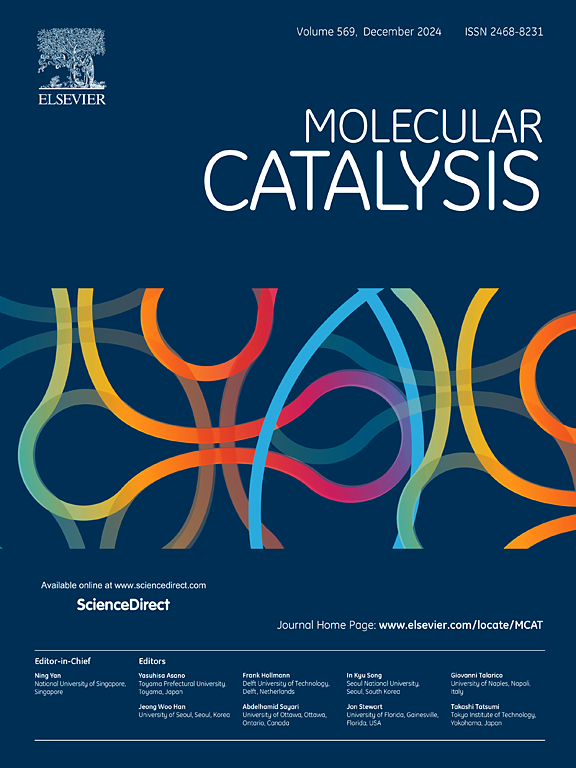Highly efficient and stable non-noble metal CoM@NC (M = Ni, Mo) catalysts for NH3 decomposition
IF 3.9
2区 化学
Q2 CHEMISTRY, PHYSICAL
引用次数: 0
Abstract
Ammonia, as a promising hydrogen carrier, has garnered significant attention due to its high energy density, ease of transportation, and non-toxic decomposition process, and the absence of harmful by-products. Ammonia can produce hydrogen through the thermochemical ammonia decomposition reaction, requiring efficient catalysts. Although Ru-based catalysts exhibit high activity, their application is limited due to their high cost and scarcity. Here, a series of highly efficient and stable non-noble CoM@NC (M = Ni, Mo) bimetallic catalysts with N-doped carbon frameworks embedded in ZIF-67 templates are synthesized for ammonia decomposition to hydrogen. The impact of non-noble metal composition and ratios on the performance of ammonia decomposition is primarily investigated. The experimental results show that: 1) The catalytic performance of the ammonia decomposition catalyst can be regulated by adjusting the catalyst composition and metal ratios; 2) Compared to CoNi@NC catalysts, CoMo@NC catalysts exhibit superior performance in ammonia decomposition; 3) Co1Mo1@NC catalyst achieves an ammonia conversion rate of 97.57 % at 550 °C under the conditions of 30,000 mL h-1 g-1 cat, with a hydrogen production rate of 32.66 mmol H2 g-1 cat min-1; 4) Even in extreme conditions of 600 °C and 60,000 mL h-1 g-1 cat for 300 h, the ammonia decomposition activity of the Co1Mo1@NC catalyst remains unchanged; 5) The excellent catalytic performance of Co1Mo1@NC catalyst is attributed to its porous layered petal-like structure providing a fast pathway for electron transfer, the presence of Co3Mo3 N bimetallic nitride with more Mo-N active sites, and its strong alkaline nature. This study offers significant importance for the further development of non-noble metal cobalt-based catalysts for ammonia decomposition.

求助全文
约1分钟内获得全文
求助全文
来源期刊

Molecular Catalysis
Chemical Engineering-Process Chemistry and Technology
CiteScore
6.90
自引率
10.90%
发文量
700
审稿时长
40 days
期刊介绍:
Molecular Catalysis publishes full papers that are original, rigorous, and scholarly contributions examining the molecular and atomic aspects of catalytic activation and reaction mechanisms. The fields covered are:
Heterogeneous catalysis including immobilized molecular catalysts
Homogeneous catalysis including organocatalysis, organometallic catalysis and biocatalysis
Photo- and electrochemistry
Theoretical aspects of catalysis analyzed by computational methods
 求助内容:
求助内容: 应助结果提醒方式:
应助结果提醒方式:


